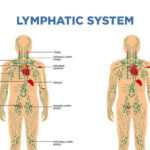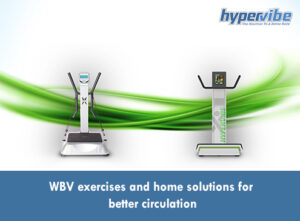12 Tips for How to Improve Circulation in the Feet
We’ve all heard the expression “having cold feet” to refer to cases when someone is hesitant to do something. But does this expression have any underlying medical causes and symptoms? The answer is “yes”. Although it is more prevalent in elderly people, it can also affect those over the age of 40, those who are overweight, who struggle with diabetes, and who do not exercise frequently.
Complications of this seemingly innocent condition could include cardiovascular failure, stroke, infected skin ulcers, blood clots, lethargy and fatigue, and lower life expectancy. As such, it is important to understand what causes cold feet and how to improve circulation in the feet. Read on to find out more.
What causes poor circulation in feet?
Cold extremities, and feet in particular, are usually caused by poor blood circulation. These may be due to an inadequate flow of blood from the arteries (supplying the arms and legs), veins (which carry blood to the heart), the lymphatic system (draining tissue fluids), and overall affecting the whole body.
Consequently, poor blood circulation happens when the circulatory system is no longer able to pump blood to all parts of the body. This can lead to a drop in blood, oxygen, and nutrient delivery. Although poor blood circulation is not a condition in and of itself, it can result from various other conditions.
In order to better understand how to improve circulation in the feet, it’s important to look at what some of the underlying causes are. Here is a non-exhaustive list of potential conditions and factors that can contribute to poor circulation in the feet.
- Diabetes: the related problems that are associated with diabetes which can have a direct impact on your feet include peripheral neuropathy where the nerves in the feet are damaged. This can be caused by injury, autoimmune disease, alcoholism, vitamin deficiency, bone marrow disorders, an underactive thyroid, and medications. High sugar levels in the blood for extended periods of time could also be a potential problem.
- Peripheral artery disease: a further related condition is peripheral artery disease which ultimately slows or blocks blood flow to the feet. This can be exacerbated by high blood pressure, smoking, age, and high levels of cholesterol. It is when there is excess calcium and cholesterol in the blood stream.
- Hypothyroidism: also known as an underactive thyroid, it is a gland that creates hormones affecting multiple organs in the body. If these hormones are not sufficient, you could experience cold feet because food and oxygen are not converted into energy.
- Raynaud’s disease/phenomenon: this phenomenon can be called Primary Raynaud’s and Secondary Raynaud’s disease or phenomenon/syndrome, respectively. It happens when your body overreacts to cold temperatures. It is indicative of problems with arteries which narrow and as a result, this keeps blood from moving to all the areas of your body including your feet.
- Anemia: this refers to an iron deficiency which means that your red blood cells are insufficient or are not healthy enough to transport oxygen from your lungs to the rest of your body.
- Buerger’s disease: this condition is linked to tobacco usage and it causes hands and feet to swell. This consequently slows blood flow, resulting in clot formations and possibly infections.
- High cholesterol: a build-up of cholesterol and inflammation in your blood vesserls could lead to arterial disease, which inhibits proper blood circulation, resulting in cold feet.
- Atherosclerosis: also known as the build-up of plaque that consists of cholesterol, fats, and other substances in the arterial walls, it leads to inhibited blood flow and arteries may become stiffer and narrower. This can subsequently result in peripheral artery disease. It can be exacerbated by diabetes, obesity, smoking, inactivity, and others. It can cause peripheral artery disease.
- Deep vein thrombosis (DVT): this is also called blood clots that block blood flow in the veins. As such, it causes poor blood circulation that can lead to the sensation of cold feet.
Obesity, pregnancy, and/or sedentary lifestyles: when one is overweight, the extra weight carried by the body also places stress on the veins of the feet. This too can lead to poor blood circulation, while those who are overweight may also struggle with their hearts pumping enough blood to their feet. This can increase the risks of blood clots, heart disease, and diabetes. - Acrocyanosis: this is a condition, which causes the extremities to turn blue. It occurs when blood vessels constrict and prevent blood flow and oxygen to move to all the necessary parts of the body.
What are the symptoms of bad circulation in feet?
Having covered some of the potential causes and combinations thereof, it’s also important to see how cold feet and poor circulation in your body can manifest themselves. Some of the most common symptoms include:
- Extreme sensitivity to cold and clamminess
- Weakness and (throbbing) pain in the feet
- Muscle cramps and joint pain
- Swelling in the ankles and feet (edema)
- Changes in skin color/discoloration
- Cracked, “weeping” skin
- Numbness, itchiness, and tingling
- Fatigue and dizziness
- Varicose veins
- Digestive issues and chest pain
- Ulcers on the legs and feet
- Heaviness in the legs and feet
- Lack of hair growth on the lower limbs
- Complete cessation of toenail growth or growth that’s very slow
- Cognitive dysfunction and difficulty concentrating
- Increased blood pressure
- Erectile dysfunction
Can poor circulation in the feet be cured?
Although poor circulation in the extremities can be a cause of a greater underlying medical issue, there are some ways as to how to improve circulation in the feet. Here are a couple of options you can try:
- Stretch, move, and exercise: irrespective of your current weight levels, moving should be an important part of your daily activities. You can start by engaging in some low-impact exercises to improve your heart’s condition and overall blood circulation. Yoga and walking are two great examples of this.
- Cease smoking and reduce alcohol and caffeine consumption: this has wide-reaching health benefits for your entire system.
- Monitor your diet: this means lowering your cholesterol levels through both diet and medication.
- Remain hydrated: this will help your blood circulate better. Drinking black or green tea is another good option.
- Lower your stress levels: yoga, meditation, tai chi, and others can be helpful strategies to follow when it comes to how to improve circulation in the feet.
- Elevate your legs: this is a simple, at-home remedy that can help make it easier for your blood to return more easily to the heart and reduce the risks of blood clot formation.
- Try compression stockings: they are good for preventing blood clots and reducing swelling. They usually assist with the discomfort caused by varicose veins.
- Opt for a massage: this is a great way to boost blood circulation and reduce stress levels.
- Take a bath or visit the sauna: warm water in a bath enables veins and arteries to expand, giving your blood more space to flow more easily through your body.
- Medication: there are oral medications such as clot-dissolving drugs or blood thinners, which your doctor should prescribe.
- Dry brush your body: this should be done before bathing to stimulate and encourage blood flow.
- Try vibration plates: our last suggestion for how to improve circulation in the feet is using vibration plates to improve blood circulation. Acting both as a gentle massage and a low-impact exercise, you are essentially targeting two areas in one attempt. It’s worth considering if you want to improve the circulation in your feet.
What vitamin is good for circulation in the feet?
Apart from the remedies for how to improve circulation in the feet mentioned above, there are some vitamins you can try to improve your body’s blood flow to your feet. These vitamins include: vitamins B6 and B12, iron, folate, vitamin E, antioxidants, folic acid, niacin (vitamin B3), beta-carotene, vitamin K, vitamin C, and vitamin D.
Concluding remarks: how to improve circulation in the feet
It is evident that improving blood flow can help prevent, reduce, and alleviate more serious medical conditions related to poor blood circulation. If you have been wondering how to improve circulation in the feet, our strong recommendation is to try the vibration plate as a double-whammy to help improve blood flow, strengthen muscles, provide a low-impact exercise activity, decrease stress, and so much more.
Resources:
http://www.healthline.com/health/poor-circulation-symptoms-causes#outlook
http://www.webmd.com/a-to-z-guides/cold-feet-reasons#:~:text=Poor%20circulation%20can%20make%20your,chances%20of%20getting%20the%20condition.)&text=Your%20thyroid%2C%20a%20butterfly%2Dshaped,blame%20for%20your%20cold%20feet.
http://www.health.harvard.edu/diseases-and-conditions/causes-of-cold-feet#:~:text=Many%20people%20frequently%20have%20cold,keep%20our%20internal%20organs%20warm.
http://www.healthline.com/nutrition/foods-that-increase-blood-flow#TOC_TITLE_HDR_17
http://www.medicalnewstoday.com/articles/322371#takeaway












